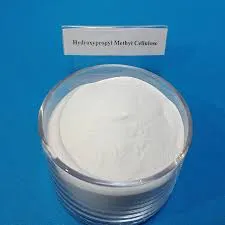
Nov . 11, 2024 06:38 Back to list
hpmc gelation temperature
Understanding HPMC Gelation Temperature Insights and Implications
Hydroxypropyl methylcellulose (HPMC) is a widely used polymer in various industries, particularly in pharmaceuticals, food, and construction. One of the critical properties of HPMC is its gelation temperature, a vital parameter that determines its functionality in various applications. Understanding HPMC gelation temperature is essential for optimizing its use in gels, coatings, and controlled-release formulations.
What is HPMC?
HPMC is a non-ionic cellulose ether derived from the natural polymer cellulose. It is modified through a series of chemical processes to enhance its solubility in water and other solvents, which significantly increases its versatility. The polymer consists of hydroxypropyl and methyl groups that influence its thermal and rheological properties.
Gelation Temperature Definition and Importance
Gelation temperature is the temperature at which a polymer solution transitions from a sol (liquid) state to a gel (solid) state. For HPMC, this transition is closely related to its concentration, the molecular weight of the polymer, and the conditions of the solution, including pH and ionic strength.
Understanding the gelation temperature of HPMC is crucial for several reasons
1. Pharmaceutical Applications In drug formulation, HPMC serves as a thickening agent and a gelling agent. The precise control of gelation temperatures allows formulators to create effective drug delivery systems. For example, in the production of hydrophilic gels, knowing the gelation temperature can help formulating optimized matrices for sustained release.
2. Food Industry In food technology, HPMC is used as a food additive for thickening and stabilizing emulsions. The gelation properties allow manufacturers to develop products with specific textures and consistencies. Understanding the gelation temperature helps producers create foods that maintain their structure during processing and storage.
3. Construction In the construction industry, HPMC is used in mortars and tiles. Its gelation properties improve the workability of the materials, making them easier to apply and score higher in durability. The gelation temperature must be understood to ensure the right viscosity and workability for construction applications.
Factors Influencing Gelation Temperature
Several factors can influence the gelation temperature of HPMC
hpmc gelation temperature

- Concentration Higher concentrations of HPMC generally lead to an increase in gelation temperature due to the enhanced interactions between polymer chains.
- Molecular Weight The molecular weight of HPMC can significantly affect its thermal behavior. Higher molecular weights typically result in elevated gelation temperatures.
- pH and Ionic Strength The pH of the solution and the presence of ions can alter the gelation temperature. Ionic strength can either stabilize or destabilize the polymer structure, which impacts the temperature at which gelation occurs.
- Additives The addition of other compounds, such as surfactants or salts, can also affect the gelation process. For example, surfactants may lower the gelation temperature by disrupting hydrophobic interactions within the polymer matrix.
Applications of HPMC Based Gels
The unique gelation properties of HPMC have led to a plethora of applications
1. Controlled-Release Formulations HPMC-based hydrogels are ideal for encapsulating drugs, ensuring a controlled and sustained release over time.
2. Cosmetics In cosmetic formulations, HPMC is used to create gels that provide moisturizing and soothing effects.
3. Personal Care Similar to cosmetics, HPMC is increasingly used in hair and skin care products, giving products a desirable viscosity and texture.
4. 3D Printing The properties of HPMC lend themselves to innovative applications such as 3D bio-printing, where the gelation temperature plays a critical role in shaping bio-inks.
Conclusion
Understanding the gelation temperature of HPMC is essential across various fields, from pharmaceuticals to food and construction. By manipulating factors influencing this property, researchers and manufacturers can enhance product performance, improving the functionality and efficacy of HPMC-based systems. As industries continue to evolve, the exploration of HPMC's gelation characteristics promises further innovation and application in numerous sectors.
-
Versatile Hpmc Uses in Different Industries
NewsJun.19,2025
-
Redispersible Powder's Role in Enhancing Durability of Construction Products
NewsJun.19,2025
-
Hydroxyethyl Cellulose Applications Driving Green Industrial Processes
NewsJun.19,2025
-
Exploring Different Redispersible Polymer Powder
NewsJun.19,2025
-
Choosing the Right Mortar Bonding Agent
NewsJun.19,2025
-
Applications and Significance of China Hpmc in Modern Industries
NewsJun.19,2025







